Legislative Analyst's Office, March 18, 1996

Background Information on
AFDC, SSI/SSP, and Medi-Cal Programs
And Proposition 99, Part I
AFDC -- FG & U Overview
Eligibility
- AFDC-Family Group (AFDC-FG): Families financially needed due to death, incapacity, or continued absence of one or both parents.
- AFDC-Unemployed Parent (AFDC-U): Families financially needy due to unemployment of one or both parents.
Services:
- Primarily cash grants.
- AFDC-FG&U grants vary with family size and by region.
- Maximum monthly grant, family of three (1995-96):
- Current payment: $607, in all counties ($594 effective 5/1/96).
- 1995-96 Budget Act: $565 in high-cost counties, $538 in low-cost counties.
One in 12 Californians, or about 2.7 million people, will rely on AFDC this year.
Following a period of substantial growth, California's AFDC caseload has recently started to decline.
Caseload change is due to demographics, societal changes, and the economy.
Federal law places eligibility and maintenance of effort constraints on the program.
General Fund Cost (1995-96): $2.6 billion for benefits, $271 million for administration.
Serves as a "pass through" for over $3 billion in federal funds for benefits and administration.
AFDC Caseloads Have Started to Decline
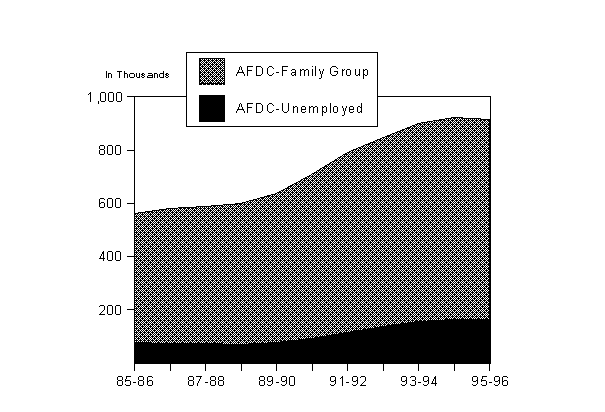
Welfare Dependency Has Started to Decline
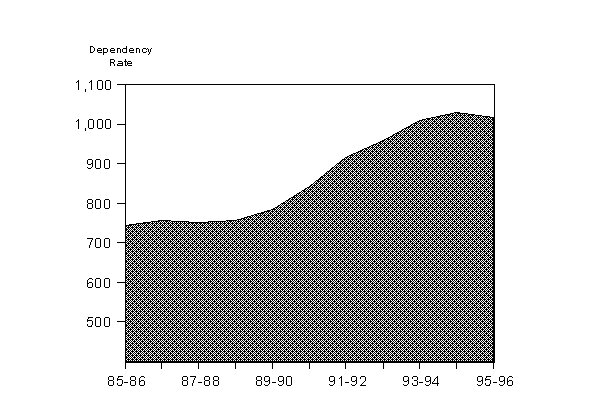
How Long Do Families Stay on AFDC?
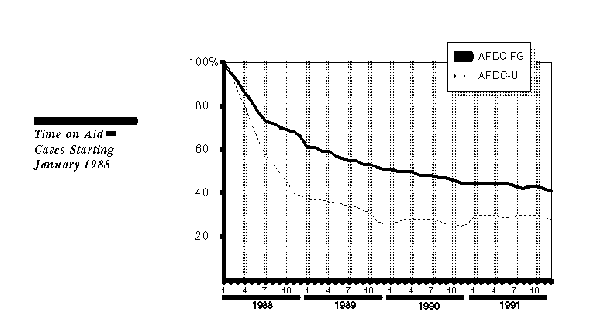
California's AFDC Grants Highest Among the Ten Largest States
January 1995
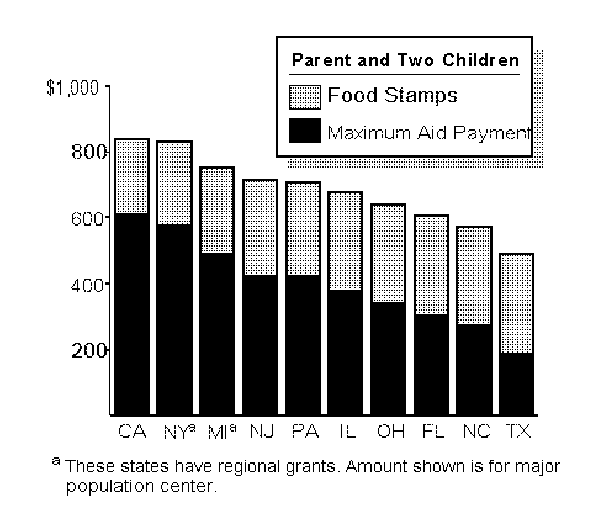
California's AFDC Grants Are Below Poverty Level
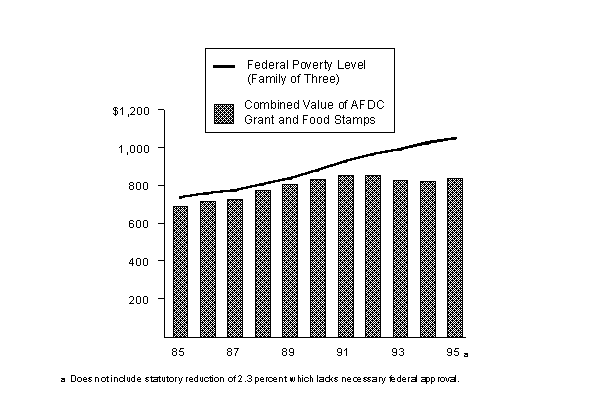
California's AFDC Grants in Constant Dollars
Maximum AFDC Grants, Family of Three
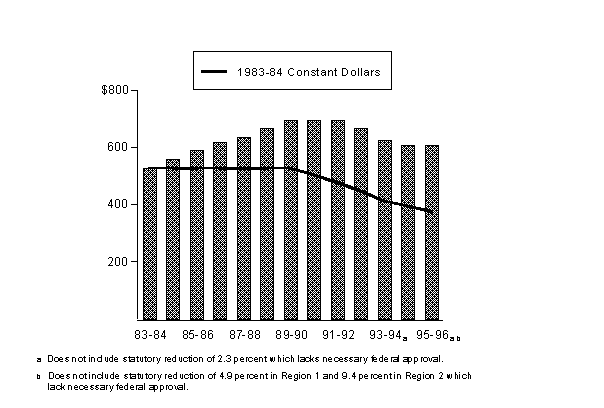
Child Support Enforcement
Program is administered primarily by the county district attorney and funded by the counties (34 percent) and the federal government (66 percent)
As a result of the counties' enforcement efforts, increased support payments to AFDC families reduce the grant expenditures. 1995-96 "off-set" to the General Fund from collections is estimated to be over $170 million.
Counties receive incentive payments from the state and federal government designed to encourage them to maximize collections.
GAIN Overview
Mandatory Participants
- All AFDC recipients unless exempt.
- Major exempt categories:
- Parent with child under age 3.
- Incapacitated parent or ill family member.
- Employed 30 or more hours per week.
Services
- Job search.
- Basic education.
- Job training.
- Community work experience.
- Child care.
Participation 1994-95
- An average of 79,158 participants receive GAIN Services.
- This represents about 21 percent of mandatory participants.
- Program changes could result in higher participation rates in 1995-96 and 1996-97.
Federal Law Establishes Target Groups
- Parent under age 24 and has not completed high school or has little or no work experience.
- Families who have received aid for three years.
- Families in which youngest child is within two years of being ineligible for assistance because of age.
Funding
- Federal funding is capped at $180 million.
- 1995-96 state funds: $83 million General Fund, $20 million Employment Training Fund.
GAIN Program Shows Positive Effects
GAIN Three-Year Impact
AFDC-FG
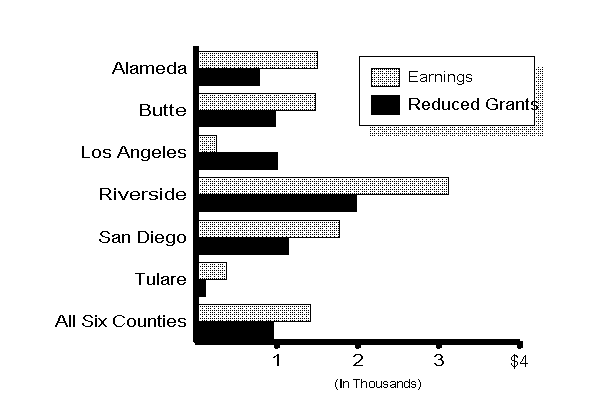
GAIN Program Shows Positive Effects
GAIN Three-Year Impact
AFDC-U

GAIN Program Can Be Cost Effective
Cost-Effectiveness: Return to Government
Per Dollar Invested
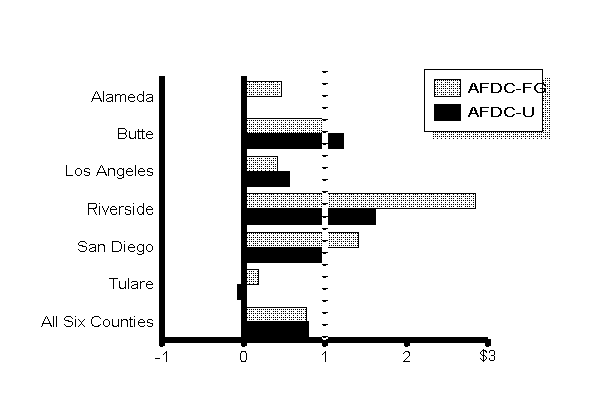
Return to LAO Home Page










